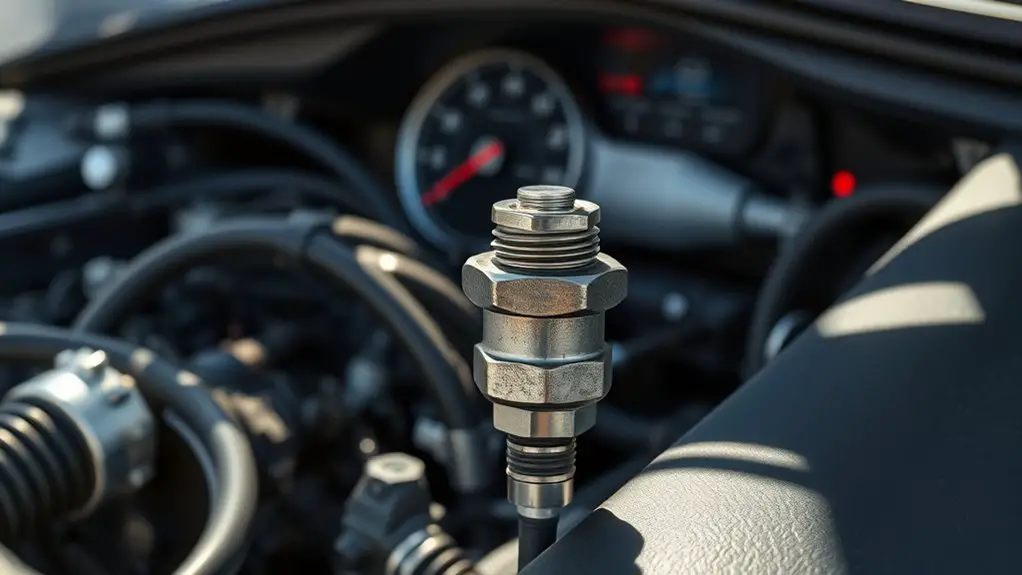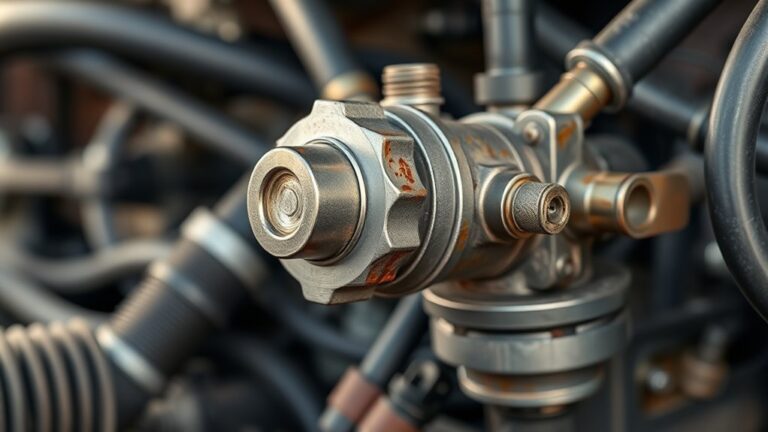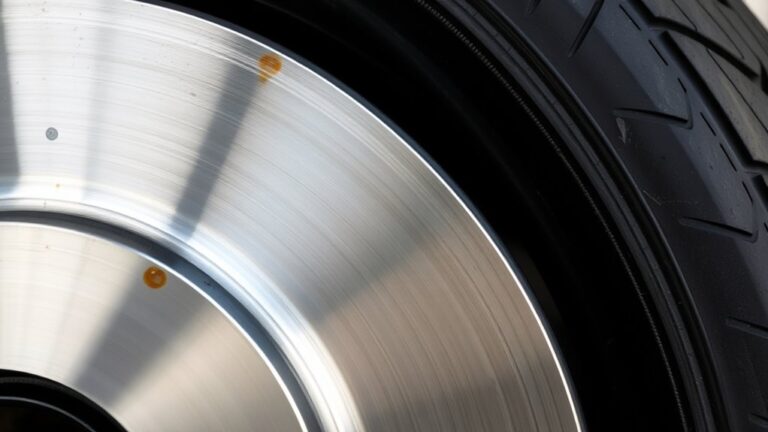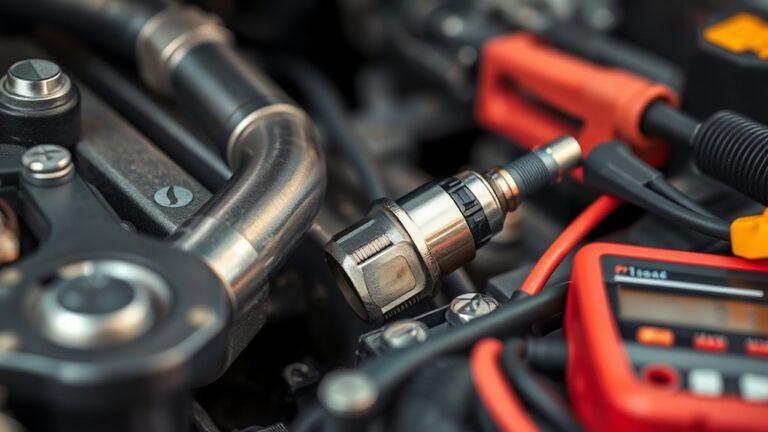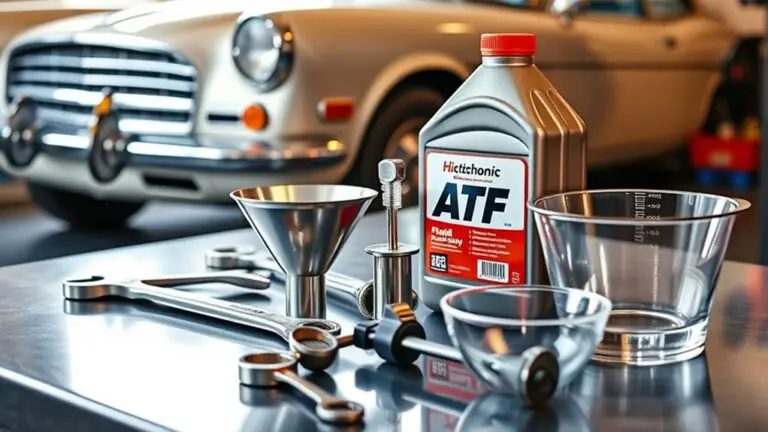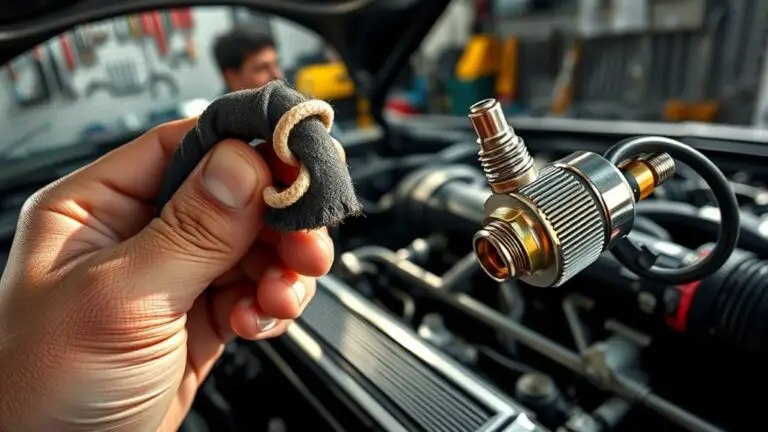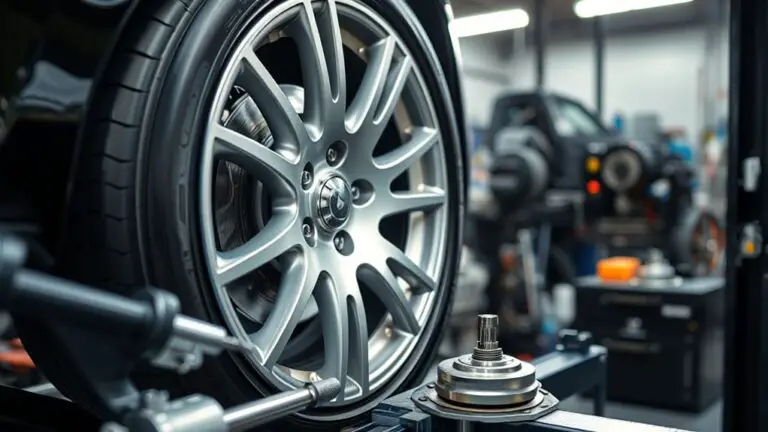When a Bad Fuel Pressure Sensor Ruins Fuel Economy and What to Do
A bad fuel pressure sensor ruins fuel economy by feeding the ECU faulty pressure data, prompting incorrect fuel delivery and timing. You’ll notice rough idle, hesitations, stalling, or surging, plus higher fuel use and possible check engine light. Start by inspecting connections, grounds, and sensor ports for dirt or damage, then compare live data to specs and lean/rich swings. If issues persist, replace the sensor with a proper calibration and test under multiple loads—more specifics come next.
Symptoms of a Failing Fuel Pressure Sensor
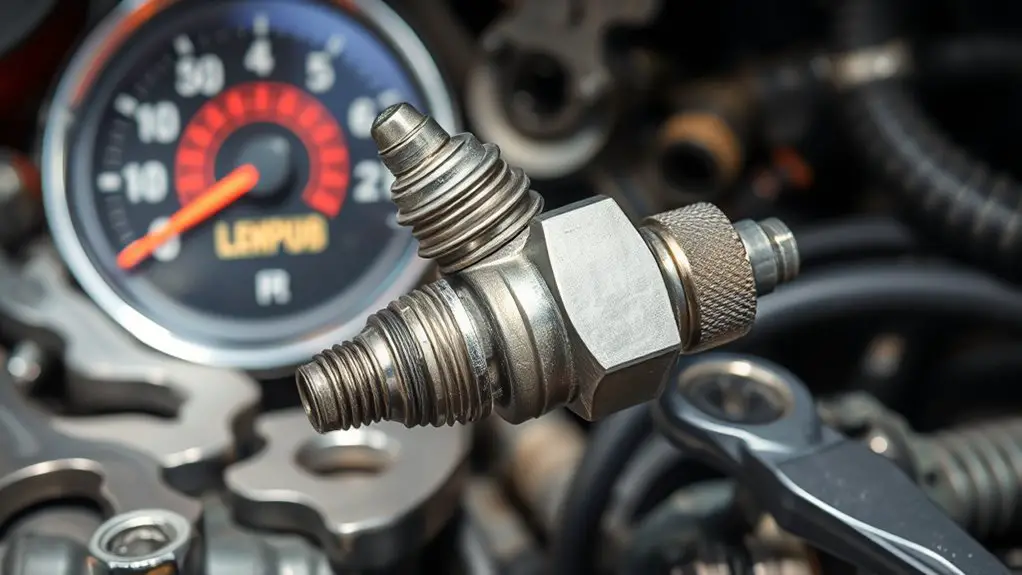
A failing fuel pressure sensor can trigger a range of noticeable symptoms, and recognizing them early helps prevent drivability issues. You’ll notice erratic engine idle, stalling, or surges as the ECU adjusts fuel delivery in real time. A rough idle or misfires during acceleration often points to inconsistent fuel pressure readings, especially under load. Watch for a check engine light or stored trouble codes related to fuel, pressure, or sensors.
If symptoms appear, use methodical troubleshooting techniques: verify wiring integrity, inspect sensor connector for corrosion, and test for correct voltage with a multimeter. Compare live data with manufacturer specifications to confirm abnormal readings. A faulty sensor may cause hesitation, reduced power, or unexpected deceleration when you tip into the throttle. Document symptoms and track when they occur to isolate causes beyond the sensor itself. Remember, sensor malfunction signs can overlap with other fuel system issues, so ruling out leaks and pump problems strengthens your confidence in a targeted fix. Stay precise, stay proactive.
How Sensor Issues Affect Fuel Mixture and Efficiency

Sensor issues disrupt the fuel-air mix by feeding faulty data to the ECU, which makes the engine run too rich or too lean and wastes fuel in the process. When sensors misreport values, the ECU adjusts fuel delivery and timing to compensate, often without you noticing. You’ll see reduced efficiency, uneven idle, and shuddering under load as the engine tries to find a safe operating point. The key to steadier performance is proper sensor calibration, ensuring readings reflect actual conditions, not drift or noise. Accurate input helps the ECU maintain an ideal fuel mixture, delivering enough fuel for power while preserving economy. If calibration is off, you’ll burn more fuel than needed and miss the intended blend of air and fuel. Regular checks of sensors, connectors, and the intake system support reliable fuel management. In short, precise sensing keeps the engine honest, responsive, and economical, so you can enjoy cleaner running and longer intervals between trips to the pump.
Common Causes of Sensor Misreads
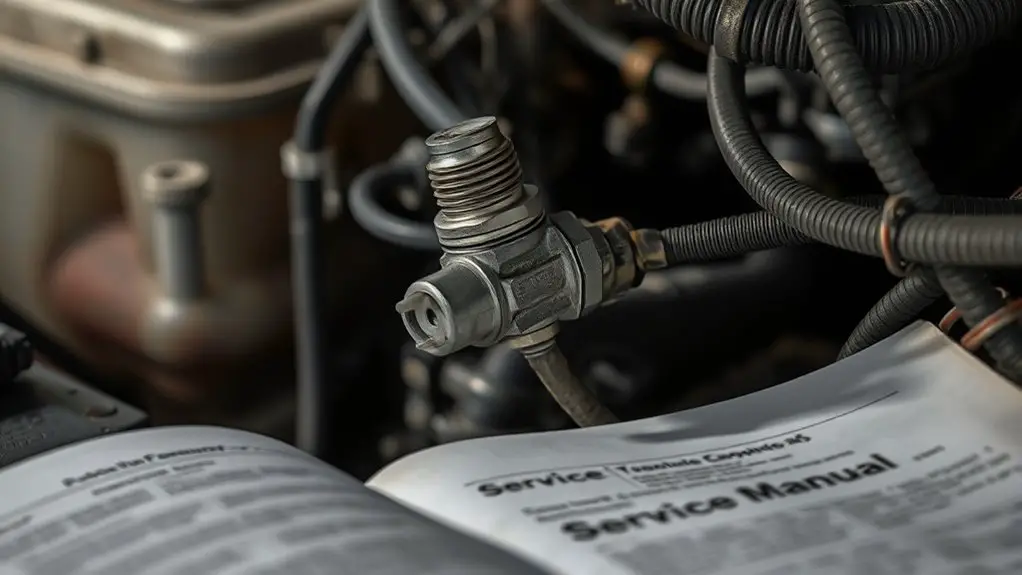
Misreads usually stem from bad connections, dirty channels, or aging components that introduce noise or intermittent signals. You’ll want to check harness pins, ground paths, and sensor connectors first, since small faults cause big swings in readings. Poor routing or damaged insulation can create EMI that fools the ECU. Dirty channels—contamination on the sensor tip or within the port—alter impedance and skew calibration over time. Aging components drift, so sensor calibration can wander, producing misread causes that feel random rather than rooted in the system. Keep wiring clean, dry, and secure to preserve signal integrity. Regularly confirm that the sensor’s reference voltage remains within spec, and monitor for sudden jumps that signal instability. If a misread persists, recheck calibration settings and replace compromised parts. Sensor calibration is key to reliability; address issues early to avoid cascading fuel-trim errors and wasted efficiency.
| Condition | Symptom | Action |
|---|---|---|
| Connection wear | Intermittent signal | Re-seat/replace connectors |
| Channel contamination | Skewed readings | Clean port, inspect seal |
| Aging sensor | Drift over time | Verify calibration; replace if needed |
| EMI exposure | Noise spikes | Shielding, routing corrections |
| Ground integrity | Ground loop issues | Inspect grounding path |
Diagnosing a Bad Fuel Pressure Sensor
You’ll start by checking sensor signal clues to see if the readings match real engine conditions. Compare pressure readings to error codes to decide if a fault is sensor-related or another system issue. Then perform basic testing and verification to confirm the sensor’s status before pursuing further fixes.
Sensor Signal Clues
How can you tell a fuel pressure sensor is failing from its signals? Start with lean or rich swings without driver input, then watch for random idle hiccups. A flaky sensor often sends erratic numbers, so your engine control unit may chase ghosts, causing fluctuating timing, weird surges, or sudden deceleration. Look for abrupt drops or spikes in pressure readings that don’t align with RPM or load changes. Sensor signal interpretation matters: compare live data to known baselines, and track consistency over multiple drives. In sensor data analysis, note any persistent bias or drift, plus sudden return-to-normal after resets. If signals look unsettled, perform a connector inspection and test with a known-good sensor. Precision checks prevent misdiagnosis and protect fuel economy.
Pressure vs. Error Codes
Pressure readings don’t exist in a vacuum—error codes tie them to actual faults in the system. When you see codes related to fuel pressure, you’re not chasing numbers alone—you’re mapping cause to effect. Use these clues to gauge whether the issue is sensor accuracy or a calibration need, not fantasy fixes.
- Interpret codes with the sensor’s range in mind, noting any out-of-range flags.
- Compare live readings to known manufacturer specs during steady states.
- Check for intermittent codes that align with temperature or load changes.
- Consider whether pressure calibration drift could be throwing off control logic.
Knowing how codes relate to real faults helps you decide if you need recalibration, replacement, or a more targeted diagnostic approach. Stay precise, stay practical.
Testing and Verification
Testing a bad fuel pressure sensor isn’t guesswork—it’s a methodical check of signals, ranges, and consistency to prove or rule out faulty sensing. You’ll verify sensor functionality by comparing live readings to spec values under steady and transient conditions. Use a quality scan tool to log pressure, voltage, and fuel trim while replicating load and throttle changes. Note any lag, spikes, or dwell times that deviate beyond tolerances. Employ testing methods that isolate the sensor from the system: backprobe harness pins, check for grounding issues, and confirm connector integrity. Cross-check with a known-good sensor if available. Document discrepancies, then decide whether calibration, replacement, or downstream fixes are warranted. Precision in data and concise conclusions keep your drive free from ambiguous fault chatter.
When to Test and Replace the Sensor
When should you test and replace the fuel pressure sensor? You test when symptoms arise or at scheduled maintenance. If fuel economy worsens, hard starts, or erratic idle appear, verify with a diagnostic scan and pressure test. Plan sensor replacement around proven replacement intervals or when readings drift beyond manufacturer specs. Don’t wait for a failure to act—pinpointed testing saves fuel and reduces risk.
Test fuel pressure if symptoms appear or at maintenance—drift or bad idle warrant quick checks.
- Establish baseline readings for your engine when new, so you know what’s normal
- Schedule tests at service intervals, not just after trouble starts
- Track sensor lifespan and map it against replacement intervals you’re comfortable with
- Use verified parts and follow torque specs to avoid future leaks or faults
Impact on Engine Performance and Longevity
A faulty fuel pressure sensor can trigger engine stress indicators like rough idling, misfires, and poor acceleration, signaling you to check pressure consistency. These signs offer clues about potential longevity impact, such as uneven wear on pistons, valves, and the fuel system. By tracking these indicators early, you can prevent long-term damage and preserve engine endurance.
Engine Stress Indicators
Engine stress indicators reveal how engine load, temperature fluctuations, and component wear impact performance and longevity; when these indicators rise, you may notice reduced efficiency, increased fuel consumption, and the risk of premature failures.
- You’ll see changes in how hard the engine works, signaling higher load than ideal
- Temperature swings can nudge timing and fuel delivery off balance
- Small wear patterns compound, narrowing tolerances and hurting response
- Diagnostics often flag codes tied to miscalibration or flow restrictions
In practice, track trend data, compare factor shifts to baseline, and address root causes quickly to preserve engine load balance and fuel efficiency, while keeping performance predictable and controllable for your freedom-filled drive.
Longevity Impact Clues
Longevity hinges on how fuel pressure sensor health and fuel delivery patterns shape engine wear over time. You’ll notice that gradual sensor drift or a stuck valve changes fuel spray timing, stressing cylinders and reducing fuel system longevity. When flow becomes uneven, you’ll see rough idle, misfires, and accelerated wear on injectors, seals, and pistons, shortening sensor lifespan and general engine health. You can protect longevity by recognizing early warning signs, keeping the fuel system clean, and replacing aging components before failures cascade. Use precise maintenance intervals and monitoring to sustain performance.
| Step | Action |
|---|---|
| 1 | Inspect sensor wiring for corrosion and secure connections. |
| 2 | Test fuel pressure with a calibrated gauge. |
| 3 | Clean or replace injectors as needed. |
| 4 | Log patterns to track fuel system longevity. |
Preventive Maintenance to Protect Fuel Economy
Regular preventive maintenance helps protect fuel economy by keeping the fuel system and engine operating efficiently; small issues can add up to measurable losses if ignored.
Regular preventive maintenance protects fuel economy by keeping the fuel system and engine efficient.
You’ll minimize fuel waste by sticking to a simple cadence: monitor fuel quality, keep lines clean, and maintain proper air-fuel balance. Regular checks catch leaks, degraded seals, and worn components before they tax efficiency. Use fuel additives as directed to stabilize ethanol blends and prevent deposits, but don’t rely on them as a fix for neglected maintenance. Engine tuning matters too: keep ignition timing and sensor inputs aligned with manufacturer specs to maximize combustion efficiency.
- Schedule timely filter changes and fuel system cleanups
- Use quality fuel and avoid low-octane abuse
- Verify sensor readings and idle stability during service
- Align engine timing and fueling with recommended specs
These steps support freedom by preserving performance without sacrificing reliability.
DIY Checks vs. Professional Diagnosis
When it comes to diagnosing fuel system faults, you can handle simple checks yourself, but certain issues demand professional testing. DIY checks give quick insights: scan for codes, inspect wiring, test fuel pressure with a basic gauge, and verify sensor grounding. You can also listen for inconsistent fuel trims or stalling patterns that hint at sensor faults before you dive deeper. Keep expectations realistic—some symptoms mimic unrelated problems, so avoid over-interpreting DIY results. If measurements drift or codes persist, it’s time for a professional evaluation. A technician uses calibrated tools, controlled fuel-flow tests, and live data to separate sensor faults from injector or pump anomalies. Professional evaluation minimizes guesswork and reduces the risk of misdiagnosis. Use DIY troubleshooting to triage, but entrust final conclusions to trained techs when precision matters for fuel economy and safety. Reserve definitive actions for qualified service to protect performance and reliability.
Choosing a Replacement Sensor and Proper Calibration
Choosing a replacement sensor and calibrating it correctly starts with matching the part to your exact vehicle and fueling system, then following the manufacturer’s calibration procedures step by step. You’ll want sensor compatibility confirmed before purchase, then rely on the official procedure to avoid voicing guesswork. After installation, run through the diagnostic checks that verify the sensor reads cleanly across the operating range. Don’t skip the calibration data; improper values lock you into poor fuel trims and waste fuel. Focus on practical installation tips to minimize air leaks and electrical noise that can skew readings. Precision here preserves performance and freedom on the road.
Choose the right sensor for your exact vehicle, then calibrate precisely per factory procedures.
- Confirm sensor compatibility with your VIN, engine, and fuel system
- Follow wiring harness checks and secure connections during installation
- Calibrate using factory procedures exactly as written
- Recheck readings under idle, acceleration, and steady cruise to confirm consistency
Frequently Asked Questions
Can a Bad Sensor Cause Sudden Fuel-Rich Bursts?
Yes, a bad sensor can trigger sudden fuel-rich bursts. When fuel pressure readings spike or drift due to sensor malfunction, your engine may briefly inject extra fuel to compensate. You’ll feel hesitation, rough idle, or pinging as it leans back toward normal. Check fuel pressure, scan for faults, and replace the sensor if readings stay abnormal. A proper repair restores fuel pressure consistency and prevents future bursts, preserving performance and efficiency.
Does ECM Tuning Mask Sensor Faults and Restore Mpg?
ECM tuning doesn’t truly mask sensor faults or fix mpg in the long run. You might gain a temporary illusion of efficiency, but underlying issues stay hidden, and fuel economy drops again. If you suspect a fault, diagnose the sensor, scan codes, and confirm with live data before touching tunes. You’ll preserve performance and freedom once you address real faults, not pretend fixes, and you won’t waste fuel chasing shadows.
Can Weather Affect Sensor Readings and Mpg Accuracy?
Yes, weather can affect sensor readings and mpg accuracy. Temperature fluctuations shift air density and fuel vapor, while humidity levels can alter sensor signals. You’ll notice lean or rich indications as temps swing, impacting injector timing and timing maps. To stay reliable, keep up with maintenance, note changes with weather, and consider a diagnostic scan if mpg drops suddenly. Your best bet is consistent driving and monitoring, adjusting expectations for hot, cold, or damp days.
Are Aftermarket Sensors Less Reliable Than OEM for MPG?
Yes, aftermarket sensors are often less reliable than OEM for mpg, though it depends on the brand. You’ll want to weigh aftermarket reliability and sensor performance carefully. If you’re chasing consistent fuel economy, stick with trusted options and verify warranties. You may see more variance in readings, leading to fluctuating MPG. Do your research, read reviews, and choose sources that offer solid return policies. Your goal: predictable, steady sensor performance.
How Long Can a Vehicle Run With a Failing Sensor Before Damage?
You’re asking how long you can drive with a failing sensor before damage. In practice, drive-time varies, but don’t test limits. If you notice sensor failure symptoms like erratic idle, hard starts, or limp mode, stop and diagnose. Extended operation can stress the fuel system and trigger damage. The fuel system impact worsens with heat and load, so seek timely repair. Quick diagnosis minimizes risk, saves fuel, and preserves components.

